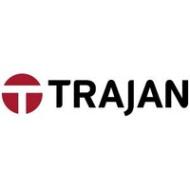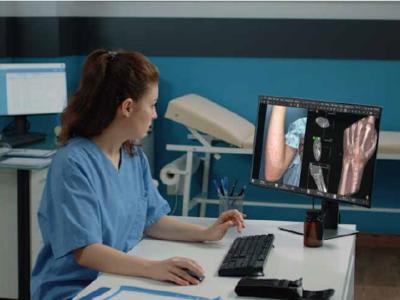This case study was originally published in our report,
The future of medtech in Australia. Download the full report >>
Trajan Scientific and Medical was named for the thirteenth Roman emperor, one of its most successful, who led Rome to its peak, building infrastructure and doing social good. The business is focused on the analytical science of extracting quantitative information from a sample. Their purpose is to support science that benefits people.
Trajan has acquired 12 businesses since it was founded in 2011. Considerable work is taking place right now to integrate these businesses and realise synergies in terms of revenue, growth, costs and operationally. Work is ongoing to transition the footprint of the business to optimise performance, which involves developing its operations in Penang, Malaysia as a centre of excellence, with a 150-strong team already based there. In Melbourne, the focus has been on developing robotic production platforms to take the variability and labour intensity out of production processes.
Production capability is also being expanded at Trajan’s facility in the US in Austin, Texas, in addition to consolidating operations at its robotics business in North Carolina. “Our aim has been to scale science engineering at a global level to become an industry supplier,” says Tomisich. Another focus is rounding out the company’s in house technology development capacity. This involves extending and growing the existing portfolio of businesses with product line extensions.
If we think about laboratories, samples come in every day for blood, water, soil, food and more. The purpose of those labs is to understand the composition of those samples, such as a biomarker in blood or a contaminant in soil. Trajan designs and develops the core technologies that allow those measurements to happen.
- Stephen Tomisich Chief Executive Officer, Trajan Scientific and Medical
Alongside this is a program to invest in disruptive technologies such as microsampling devices and microsampling workflows to service future markets. This has significance for clinical research, helping to make it easier for trial patients to supply samples without having to attend a health facility.
“We are developing a range of tools that allow people to take a blood or skin sample with analytical credibility that would otherwise require you to go to a clinic. Downstream from that is to develop laboratory workflows, physical tools and robotic automation,” says Tomisich.
Central to Trajan’s growth strategy is challenging the current healthcare model, which is based on centralised, diagnostic-based sick care.“The way the healthcare system works, we wait until we have symptoms, then get diagnosed and treated. Yet, if we understand someone’s genetics and the biomarkers we should be looking for, we can become far more proactive and preventative when it comes to illness,” says Tomisich.
Trajan has a partnership with The Baker Institute in Melbourne, a world leading research centre for cardiovascular disease and diabetes.
The institute is undertaking ground-breaking research into cardiovascular events that happen to people who are not classified as high risk, looking at hundreds of measurements about lipids. Trajan’s expertise in microsamples has been instrumental to the research and the future of predictive healthcare. An important part of this work is challenging barriers of adoption for new technologies across the healthcare system, an impetus for Trajan’s acquisition strategy.
After acquiring My Health Test in 2021 it now has a medically-accredited pathology laboratory in Melbourne which has been accredited in the field of medical testing (ISO 15189) by the National Association for Testing Authorities, Australia (NATA) in conjunction with the Royal College of Pathologists of Australasia (RCPA). This is key to developing an accredited, medical-pathology workflow other labs can replicate, which will support industry-wide adoption of Trajan’s innovations.As for the future, the emphasis is on continuing to scale the business and deliver emerging medical technologies to the world and improving health outcomes for the global population.






